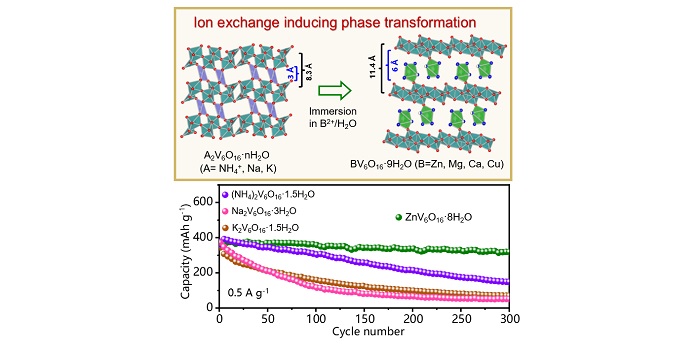Our research group has introduced an innovative approach involving ion exchange to synthesize a novel vanadium-based material known as ZnV6O16 · nH2O. Vanadium-based materials have gained considerable prominence as positive electrodes in Zinc-ion batteries (ZIBs), with a particular focus on A2V6O16 · nH2O (referred to as AVO, with A representing cations such as NH4+, Na, and K). Nonetheless, AVO has faced challenges, including pronounced dissolution, phase transitions, and a limited channel spacing of approximately 3 Å. These issues have led to suboptimal cycling stability and rate capability.
In our study, we have elucidated the underlying causes behind the deteriorating performance of AVO cathodes and subsequently engineered a high-performance alternative, ZnV6O16 · nH2O (hereafter referred to as ZVO). Through an ion exchange-mediated phase transition, AVO is transformed into ZVO, characterized by an expanded gallery spacing of approximately 6 Å and a more robust V6O16 layer. As a result, the ZVO positive electrode exhibits remarkable performance metrics, delivering substantial capacities of 365 and 170mAh g-1 at 0.3 and 15A g-1, respectively. Importantly, ZVO maintains 86% and 70% of its capacity at 0.3 A g-1and 15 A g-1 after 300 and 10,000 cycles, a significant improvement compared to AVO.
The article links:https://onlinelibrary.wiley.com/doi/10.1002/anie.202213368

